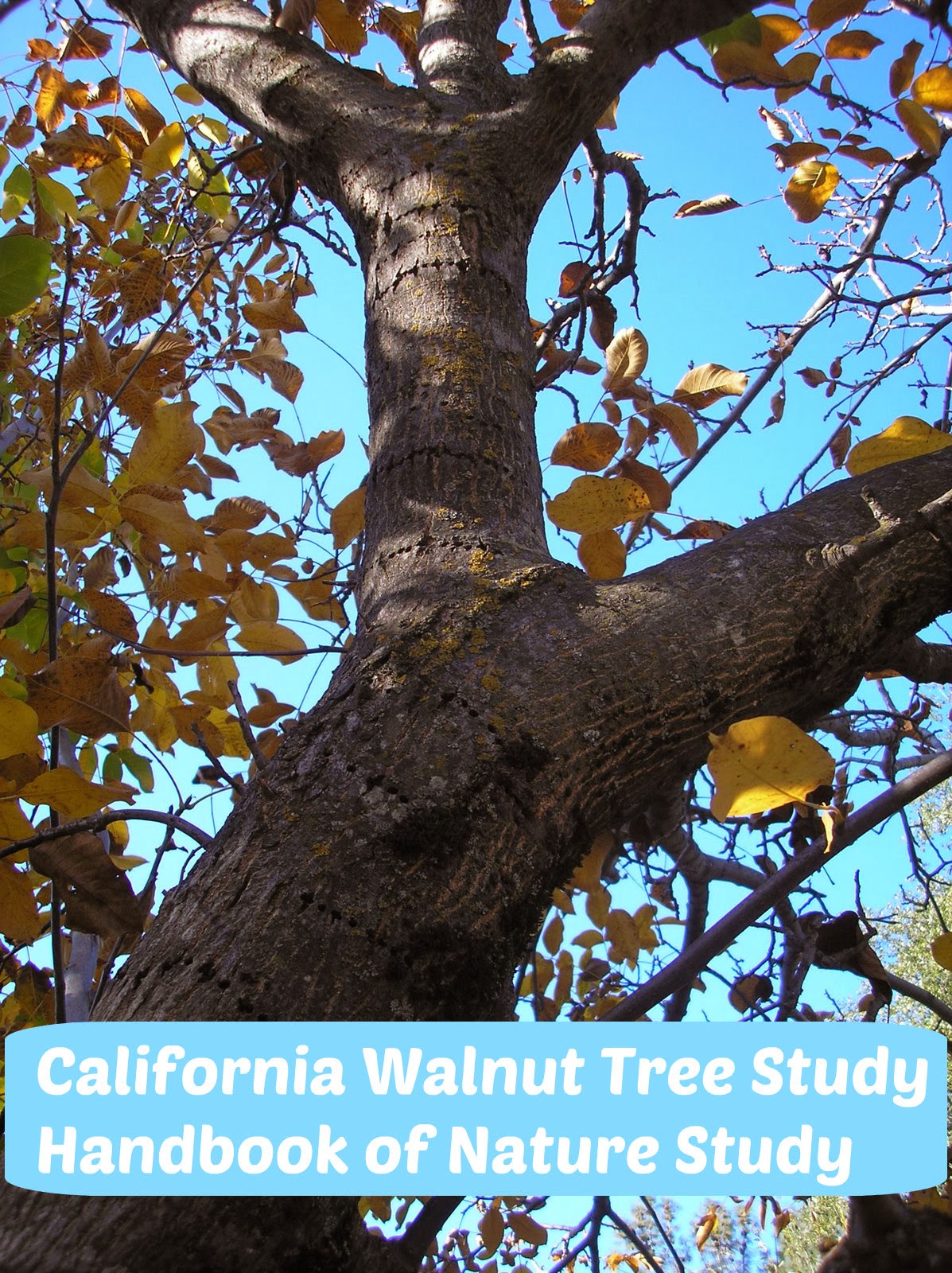Today was *another* cloudless day but we were outside looking to see what we could find interesting in the backyard. The walnut tree now that it has just about lost all of its leaves was our subject of the day. First we started looking at the way the woodpeckers have over the years made numerous holes in the trunk and large branches. Be sure to click the photo to get a better look.
As we examined the trunk closer, we noticed the change in the texture of the bark shown in the photo below.
I was interested in what was going on with it and I somewhere in my memory have stored away that my husband had once told me that they graft the English walnut onto the black walnut tree because the black walnut is a native of California so it is a hardy tree, resistant to pests but the English walnut has a thinner shell and easier to open and eat.
We decided to ask him more about it and to look it up on the internet once we got inside from our outdoor break.
Here is what we found:
- Did you know that California grows 99% of the United States’ walnuts?
- That is an average of 303,000 tons of walnuts every year!
- The Romans called the walnut Juglans regia or Jupiter’s royal acorn.
- My husband was absolutely correct and the English walnut is grafted onto a black walnut rootstock.
Fascinating! I have never noticed the grafting before in all the twenty plus years we have lived in this same house. If you want to know more about the California(English) walnut here is a link to a simple to read explanation. California Walnut
Here is the pile of leaves under the walnut tree. So many leaves to rake but not many nuts due to the resident squirrel and the Scrub jays.


I voted for you 🙂